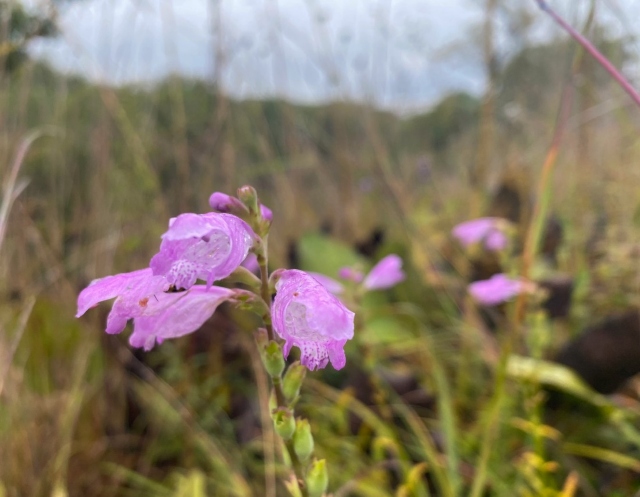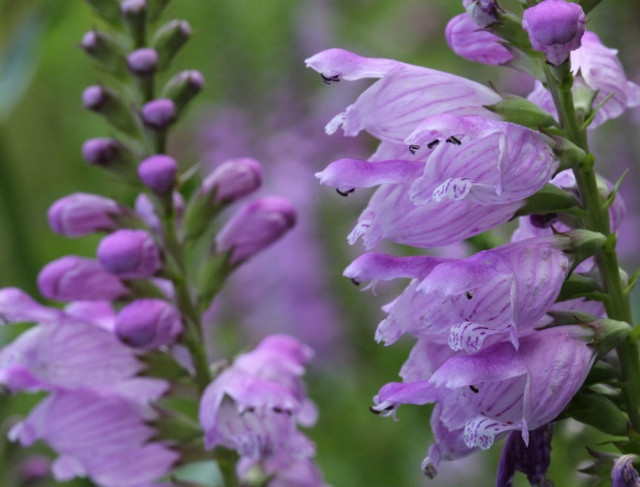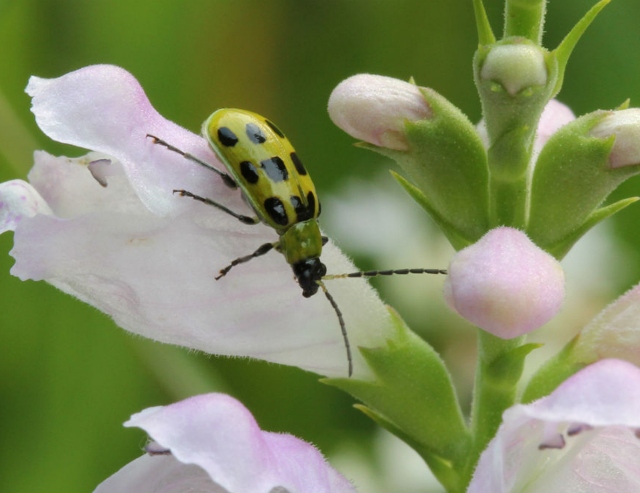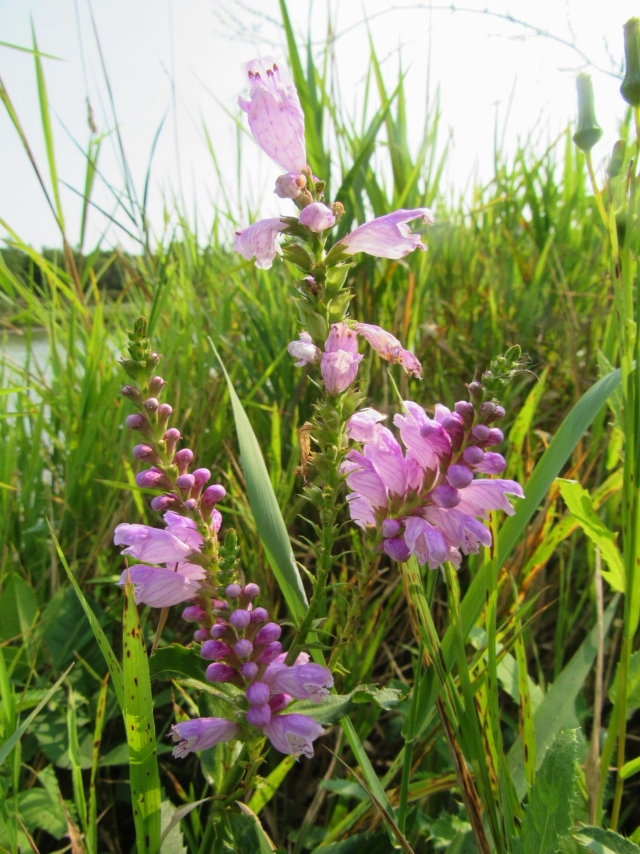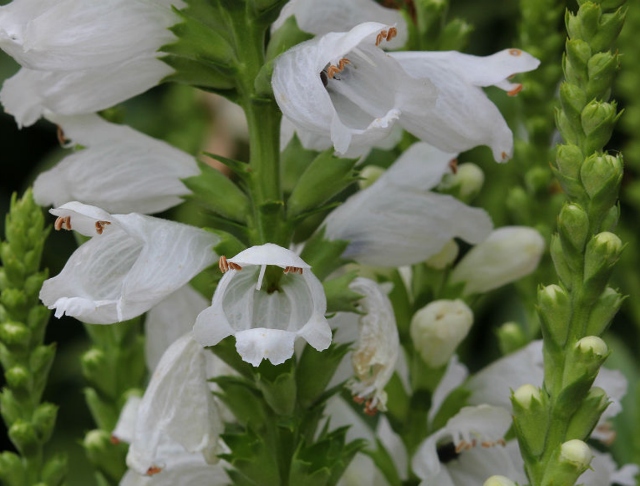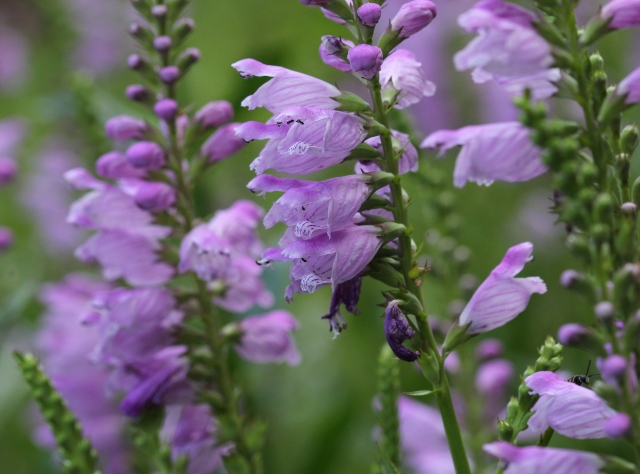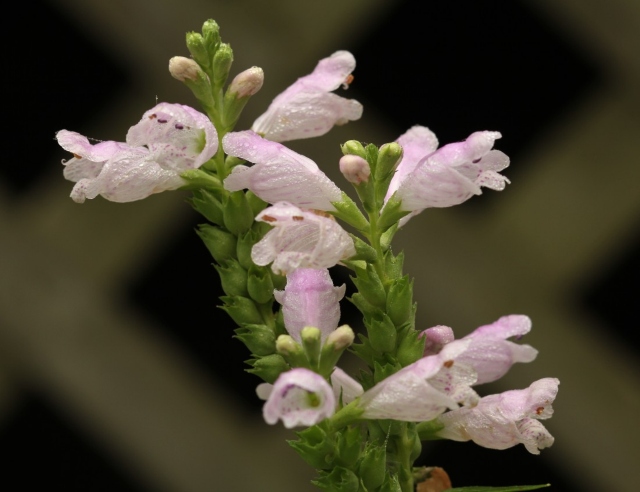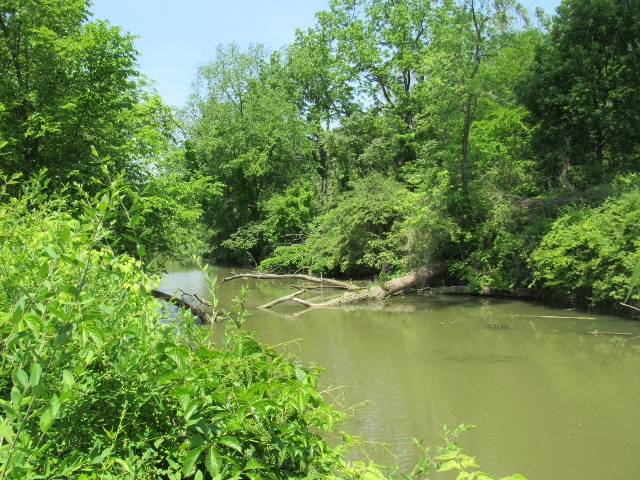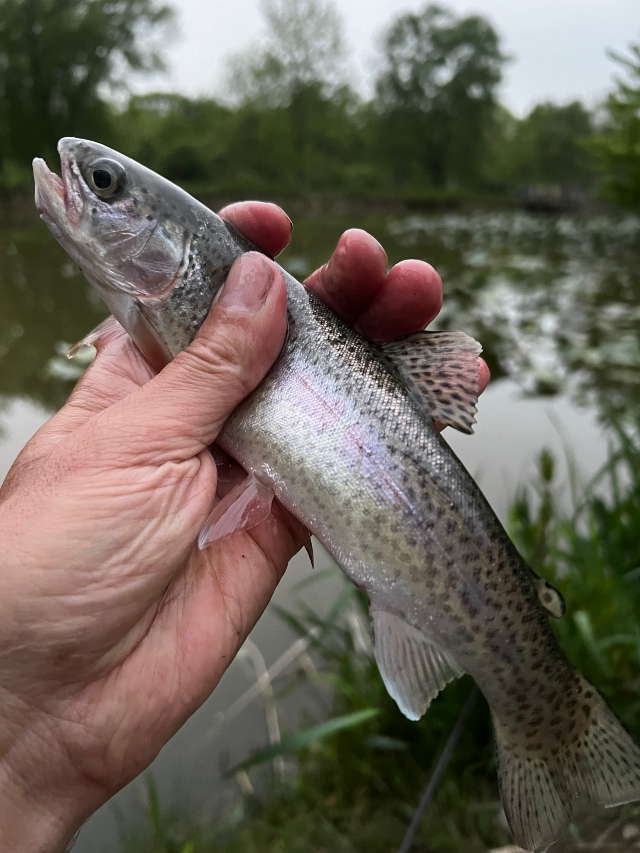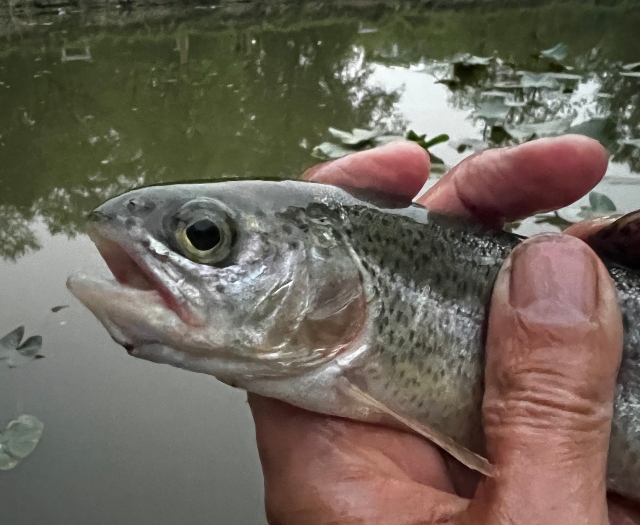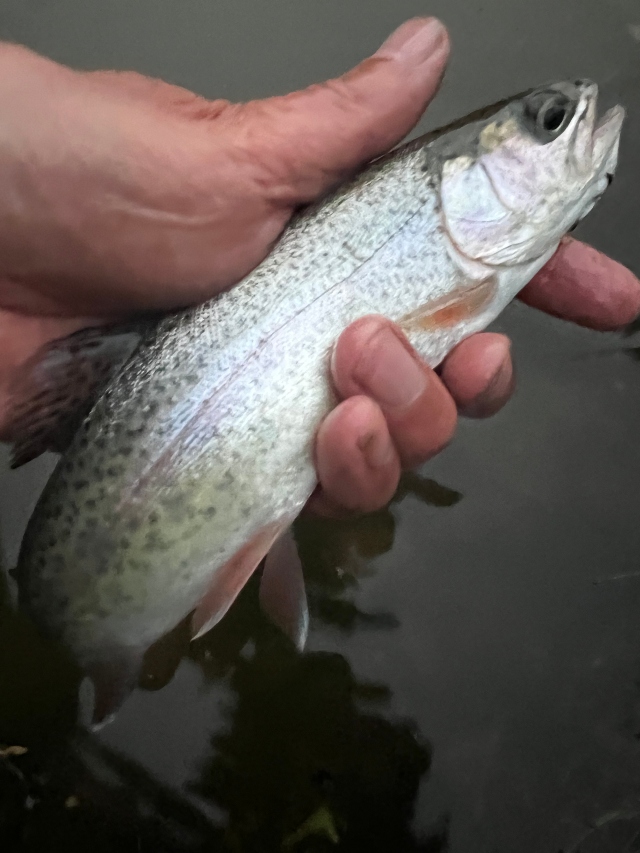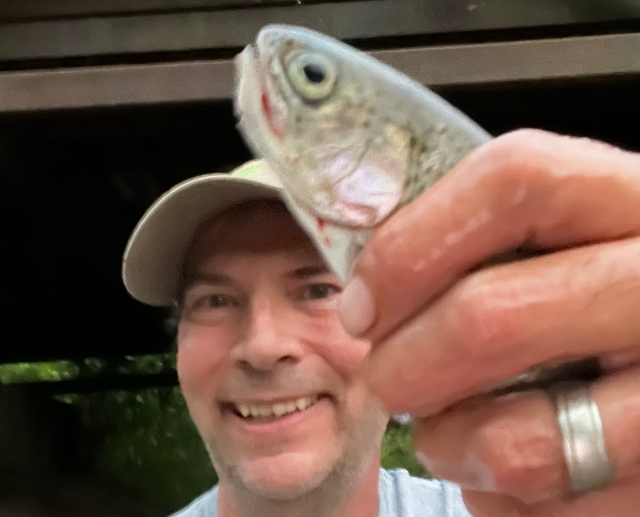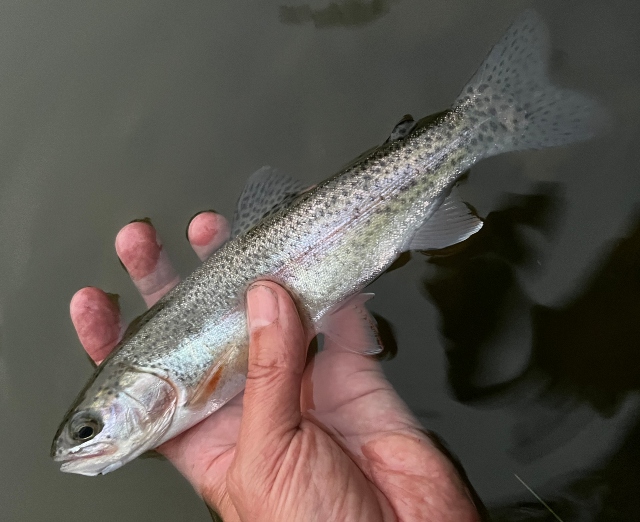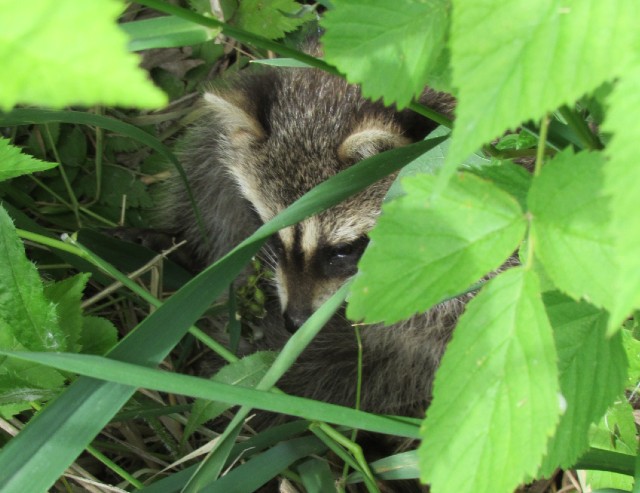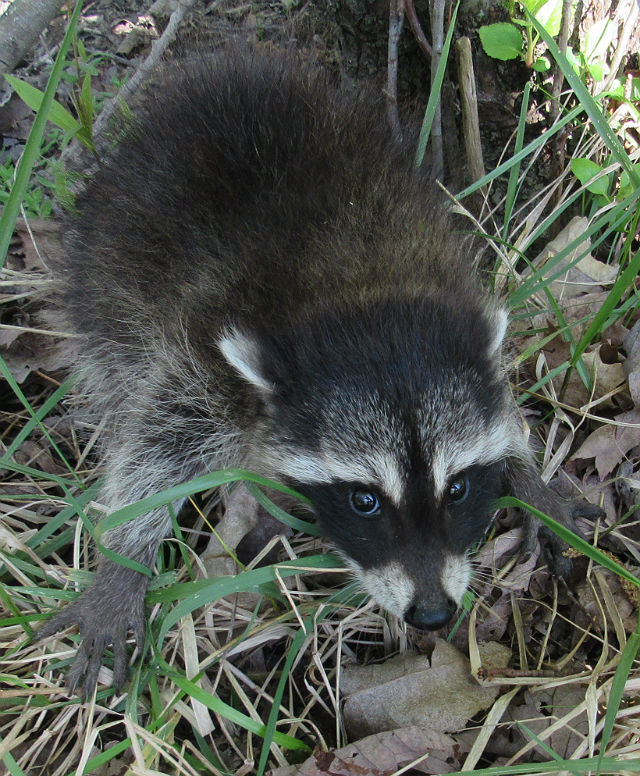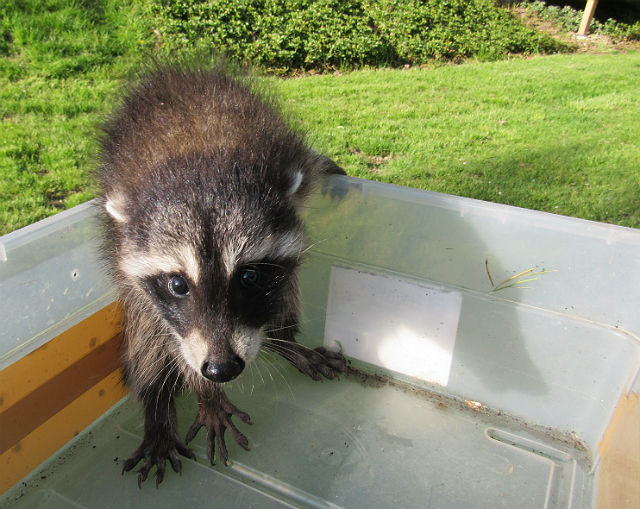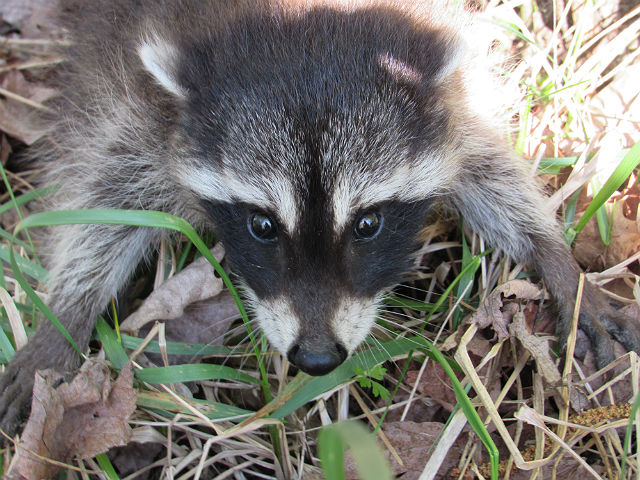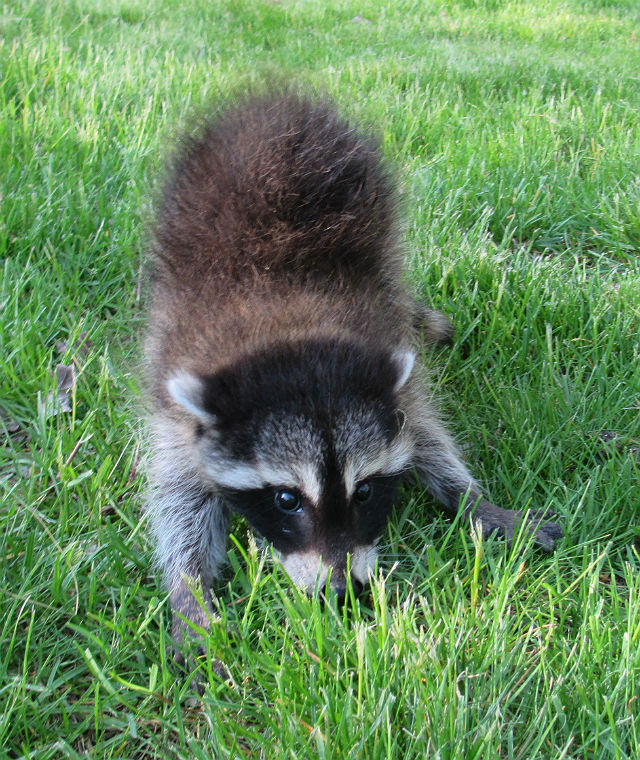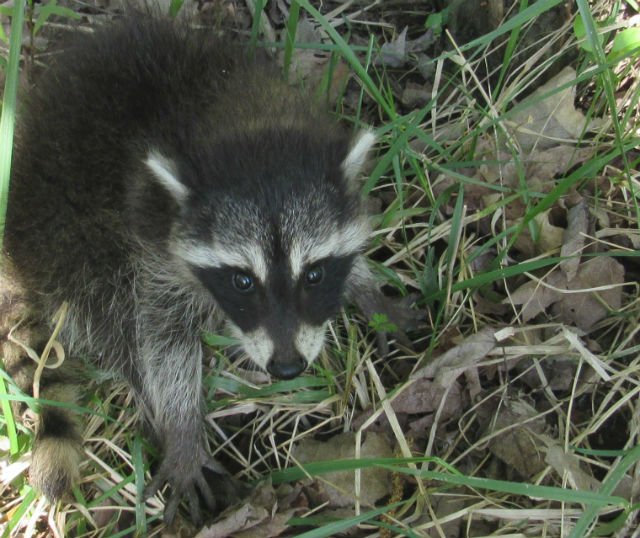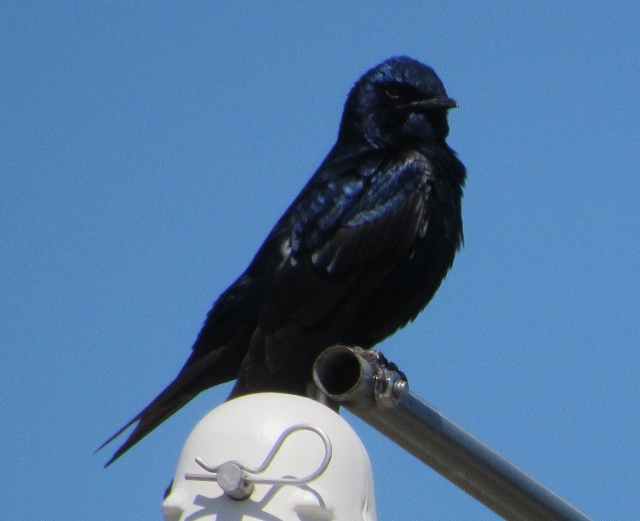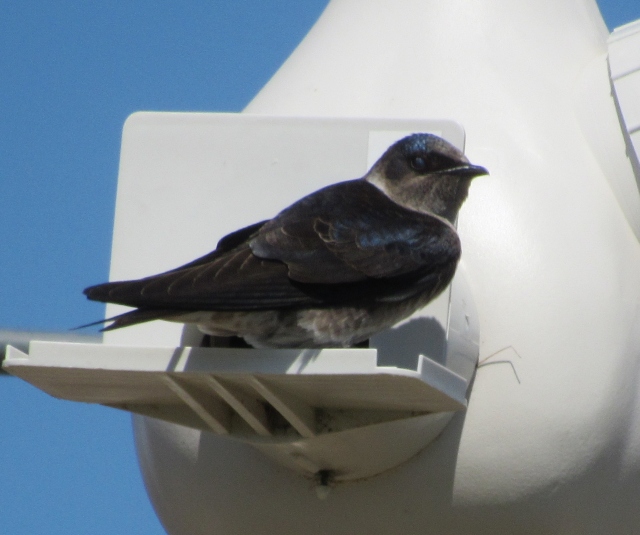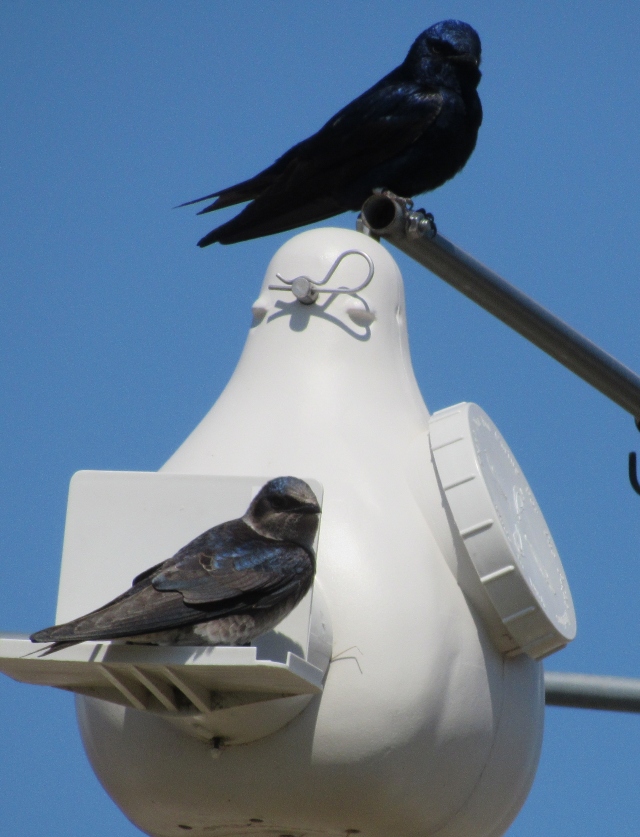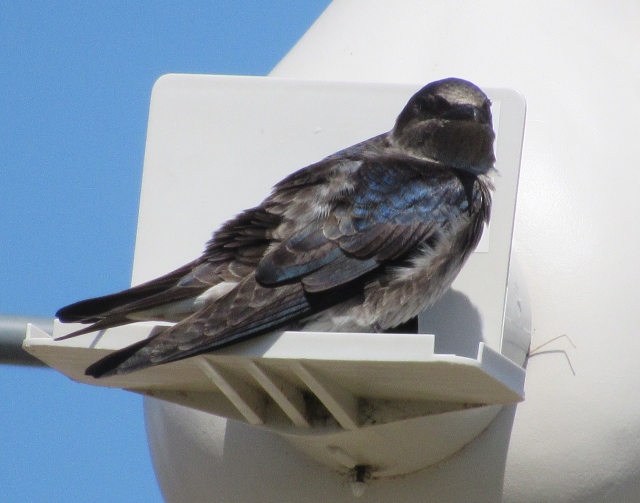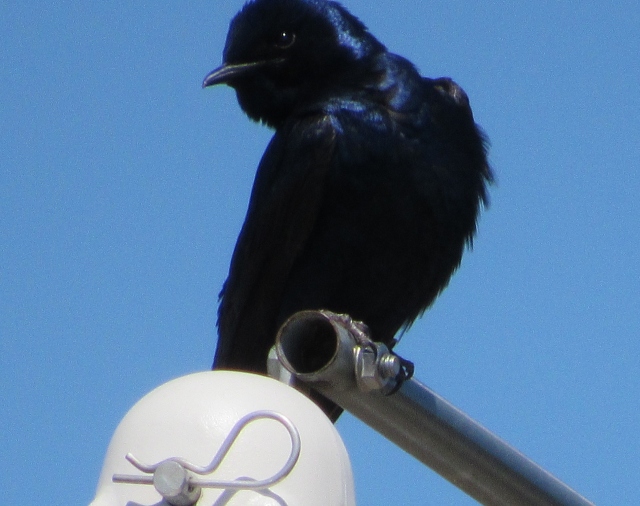This is a neat species of flowering plant that is in the Mint Family. It is native to North America, where it is distributed from eastern Canada to northern Mexico.
Sometimes known as “False Dragonhead,” it is more known commonly as Obedient Plant, because when a flower is pushed to one side, it will often stay in that position.
It grows 3 to 4 feet tall and forms dense spikes of white, pink or lavender flowers. Its leaves are opposite, stalkless, narrowly lance-shaped, sharply toothed and up to five inches long.
Obedient Plant occurs in the moist soils of fields, prairies, thickets, woodland openings and borders, along rivers and streams, and lakesides. It is commonly sold as a garden plant.
A sure sign of Summer is seeing the attractive upright spikes of snapdragon-like flowers abundantly borne atop this robust perennial.
Its very attractive flowers persist for a month or more from late Summer into early Fall. The flowers are often visited by by Hummingbirds, Bumble Bees and Carpenter Bees.
As one of our most handsome native mints, it’s hard not to enjoy the beauty of the Obedient Plant.

